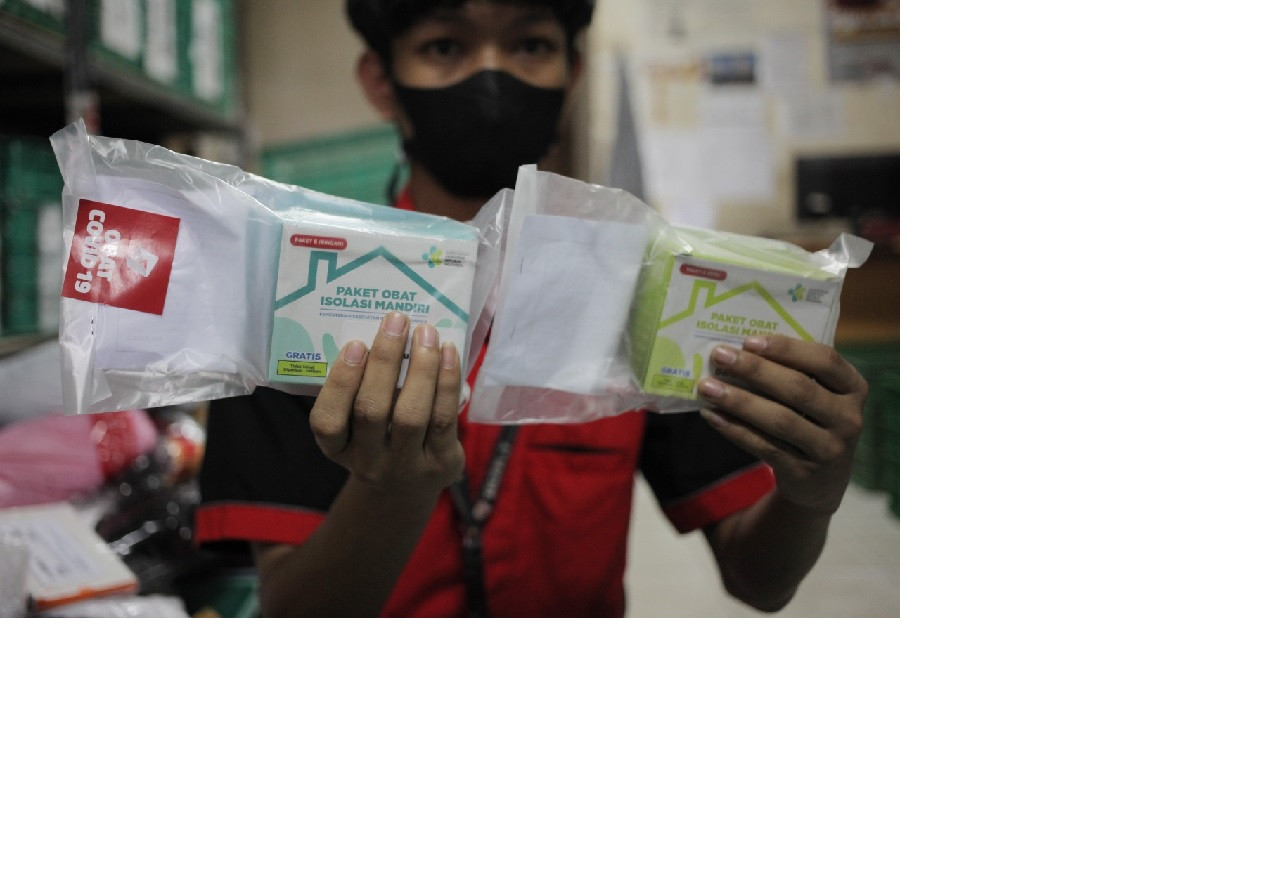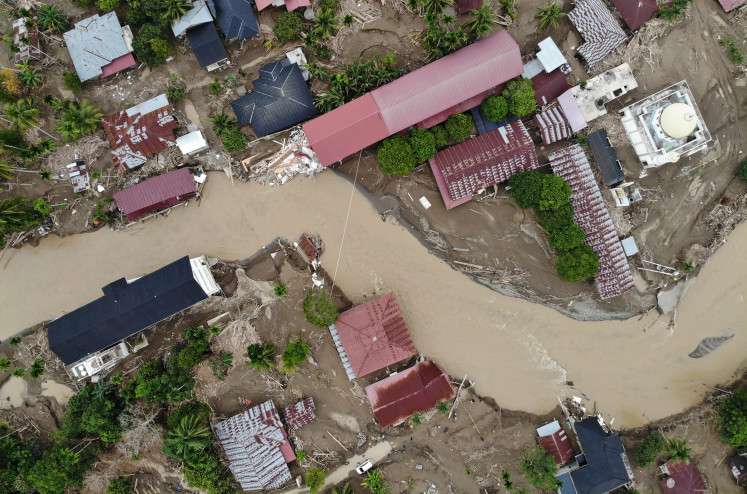Popular Reads
Top Results
Can't find what you're looking for?
View all search resultsPopular Reads
Top Results
Can't find what you're looking for?
View all search resultsDeepening telemedicine services for the unserved and underserved
The pandemic has taken a toll on health facilities across the country, particularly the primary healthcare centers (Puskesmas).
Change text size
Gift Premium Articles
to Anyone
I
n the past few weeks, the second wave of the pandemic has swept across the country. More than 3.4 million Indonesians were infected with COVID-19 at the time of reporting, while more than 95,000 have lost their lives. The number of confirmed cases has risen almost tenfold since mid-May this year. All of which are terrifying numbers.
Yet for less fortunate communities, the impact of COVID-19 has been far more deadly. A study conducted by MicroSave Consulting (MSC) highlighted the disproportionate economic and health repercussions of the pandemic on low-income segments. Women in particular felt the brunt more as they had to forgo their jobs and take up additional household duties to help their family adjust to the new normal.
The pandemic has taken a toll on health facilities across the country, particularly the primary healthcare centers (Puskesmas). Close to 10,000 Puskesmas have spearheaded the nation's effort to battle the pandemic. They are overstretched with the additional tasks of tracing infected people and implementing vaccination drives.
However, the pandemic has also highlighted an important opportunity. The opportunity to use technology to de-stress the existing healthcare infrastructure. Indonesia is home to more than 2,200 digital startups that implement technology-led solutions across multiple sectors, including agriculture, health, and financial services. Many of them already carry the tag of a unicorn.
Currently, 11 health tech companies in Indonesia have been collaborating with the Health Ministry to support those infected by COVID-19 and have to isolate at home due to limited hospital capacity. The services include medical consultations, medicines delivery, awareness activities, and a drive-through vaccination program. These health tech companies have reported a sharp increase in demand for their services after the outbreak.
However, like most technology startups, the outreach of existing health tech companies remains confined to urban centers. A large segment of the Indonesian population that largely comprises the rural poor lack access to such digital health solutions. Part of the reason is the low penetration of smartphones and, to some extent, instabilities in network connectivity. Majority of health techs have shown limited interest in building businesses or operating models that could sustainably address the health access challenges for the unserved and underserved communities.
MSC recently conducted a study to assess the impact of the pandemic on Program Keluarga Harapan (PKH), a program that provides conditional cash assistance to the poorest households in the country. In the study, 76 percent of respondents (PKH beneficiaries) expressed concerns about accessing primary healthcare facilities during the pandemic, particularly for children and pregnant or lactating women.
Around a quarter of rural respondents were concerned about accessing primary healthcare as the health centers are located far away from their homes and the cost of long commutes prove to be unaffordable. The situation is more acute particularly in Eastern Indonesia, where the healthcare infrastructure is relatively weak.
"During the pandemic, no Posyandu worker has visited my village. I had to travel long distances to the next village to avail basic healthcare," said one of the respondents in Jayapura, Papua.
So how can Indonesian health techs deepen their reach to the last mile? The task is not easy, considering the challenges that the varied terrain of the Indonesian archipelago poses. However, the key to success will depend on the following four factors:
First, an effective public-private partnership should emerge to build a sustainable operating model. The current alliance between the Health Ministry and telemedicine providers entails digitizing the primary healthcare value chain, including the frontline cadres, to enable these facilities to connect with digital health applications. In areas where proper network connectivity is lacking, investments to provide additional ICT infrastructure will be required.
The second important factor would be the use of a human-centered design approach to define service packages, user interfaces, pricing, and terms of engagement. These variations may need to be customized based on the needs of different segments of the rural population. Affordability of these services would be critical, especially for a large segment of the poor population who may be accessing these services free of cost through primary healthcare facilities. A careful assessment of the convenience a service offers as against people’s willingness to pay for it will need to be taken into consideration.
The third critical success factor is ensuring that rural communities can access such platforms and—more critically—use them. Evidence suggests that many low-income people in the country, particularly those in rural areas, cannot navigate complex applications independently. In this regard, the role of civil society organizations and community-based institutions with deep rural networks will be crucial.
For many locations, community leaders, such as PKH group leaders and selected members of cooperative and credit unions may need to be trained and digitally equipped to provide the last-mile access. For example, microfinance institutions in Bangladesh provide healthcare access to millions of rural households through a combination of technology-enabled solutions coupled with in-person outreach through community health workers.
Finally, the rules of engagement by the private sector may need to be defined to encourage responsible innovations. Countries like India are contemplating implementing public goods for digital health, such as the proposed Unified Health Interface (UHI) as an open interoperable platform to catalyze digital health innovations.
With the inherent risk of digital health, the beneficiaries need protection from any potential misuse of data or unethical medical practices. Hence, a robust regulatory framework is critical to mitigating any risks from possible malpractices. For comparison’s sake, countries like Singapore have established a robust regulatory framework, including a regulatory sandbox to encourage responsible innovations in digital health.
With the recent success in the application of health tech in combating COVID-19, Indonesia is well-placed to use a digital ecosystem to deepen healthcare services for communities that remain unserved and underserved. Collaboration between public and private stakeholders, coupled with a strong political will from the government of Indonesia, could further expand the impact of health tech platforms to make healthcare access more equitable in Indonesia.
***
Astri Sri Sulastri and Raunak Kapoor are senior managers at MicroSave Consulting (MSC). Ira Aprilianti and Alfa Gratia Pelupessy also contribute to the content of this article.










